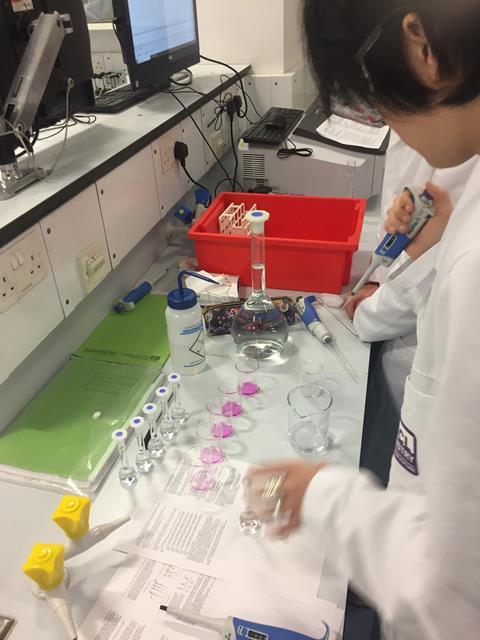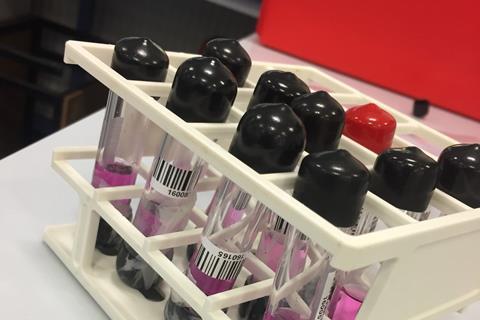Teaching the theory and practice of citizen science

As citizen science grows in popularity, more researchers are looking for ways to involve members of the public as active participants in their projects. But formal training opportunities in the form of undergraduate or postgraduate courses are not yet widely available in universities.
Since 2018, the Extreme Citizen Science (ExCiteS) research group at University College London (UCL), UK, has aimed to fill this void with a course that introduces students to ‘the theory and practice of citizen science and scientific crowdsourcing’. And in keeping with its inclusive approach to research, anyone can enrol in the study unit from anywhere in the world. Registered participants can remotely access all of the course materials for free, though only students who are studing for a masters of science degree at UCL receive formal credit for taking the course.
Remote control
Muki Haklay, co-director of the ExCiteS group and course convener, has been thrilled to see the success of this model.
The online participants form a ‘shadow community’ who follow the course alongside the UCL class. ‘To my surprise and delight, it did work,’ Haklay says. ‘We had about 1200 people who registered … of which, I would say about 50 to 100 actually took all the modules.’ Those are good numbers, as the weekly commitment – up to five hours of work – is more intensive than some other online citizen science courses.
The course has a strong practical component too, part of which involves use of the iNaturalist app. ‘I’m a strong believer that if you want to understand citizen science, join a project,’ says Haklay.
It’s not just students who can enrol. The course has been designed with researchers from universities and members of government and non-governmental organisations in mind. So, more seasoned academics and professionals from other industries stand to benefit too. The subjects covered draw from the academic literature and include the theoretical foundations of citizen science as well as insights into some of the more practical aspects of designing and implementing citizen science projects.
Additionally, the course materials are shared under a CC BY creative commons licence, meaning that anyone can distribute or adapt them with proper attribution to the ExCiteS team.
Evaluations after the first iteration of the course showed that participants had increased confidence in designing, delivering and evaluating citizen science and crowdsourcing projects, with the majority agreeing that the course was a worthwhile experience for them.
Perhaps it’s time for this hybrid model to be applied more widely by universities. We could start with chemistry departments. Initiatives such as MIT’s OpenCourseWare have been openly publishing their courses for almost 20 years, and there’s plenty of scope for other institutions to share their courses with the public too. In particular, communicating analytical techniques could help to expand chemistry’s citizen science repertoire.
Call for chemists
‘I think that chemistry in general is missing a trick,’ says Haklay. He thinks that chemists could form stronger connections to citizen science by getting ‘more active’, particularly in areas linked to life sciences, analytical chemistry or environmental science, where citizens have specific research questions that chemistry can help to answer.
‘People have a lot of issues where they would like to see chemists,’ he says, citing the example of an indigenous community in Brazil who recently contacted the ExCiteS team. The community lives along a river near a gold mine and wants to start testing the water to understand more about any effects of mining on the environment. Haklay thinks that chemists can help citizens to answer ‘fundamental research questions’ too, by developing ‘a really robust, very cheap and very easy to use set of tools’ so that people with little subject knowledge can use apps or low cost detectors to measure the levels of different chemicals in their environment.

Haklay has witnessed the positive intersection of chemistry and citizen science first-hand: ‘One of the best examples of that is the delight that I have in working with Andrea Sella, who got the whole class of first year undergraduate students to create very simple 1970s-style sensors for air quality for NO2 … and then took them out to schools,’ he explains. ‘They do an activity that actually engages the kids in school in chemistry. So, [the undergraduates] are also ambassadors to chemistry as a field.’ The students analyse the sensors back in the university labs, and take the results back to the school. ‘It’s just a fantastic way of engaging students in the relevance of chemistry to the wider world,’ says Haklay.












No comments yet